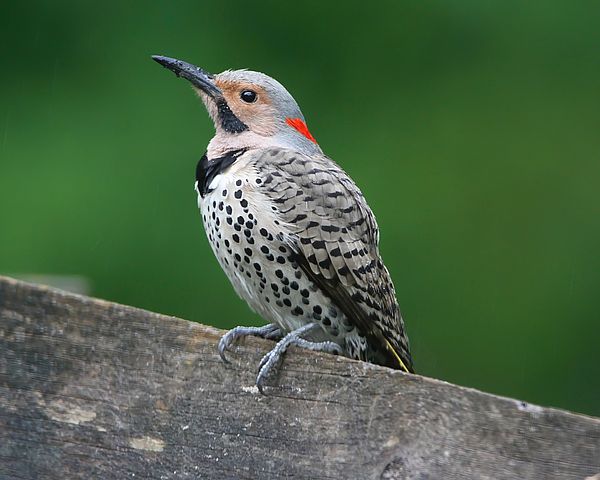Northern Flicker – Anteater of the Bird World
Article by Ava Steenstrup
The Northern Flicker is one of the most distinctive and the most widespread North American woodpecker. This large woodpecker is easy to identify by its field marks. Northern Flickers have black barring on a brownish back, a black breastband, and black spots on their tan belly. Males in the East have a gray head, red nape, black malar or “mustache,” and yellow shafts on the flight and tail feathers. Their prominent white rump is also very noticeable in flight.
Unlike most other woodpeckers, Northern Flickers are principally ground feeders. They also forage on tree trunks and limbs and are omnivores. They feed mainly on ants but also on insects such as flies, butterflies, moths, beetles, and even snails. They also eat berries, seeds, and nuts.
The Northern Flicker uses drumming instead of vocalizing to declare its territory. They will often drum on hollow trees or even metal objects to create the loudest noise possible. Depending on its choice, a flicker can be heard from at least half a mile away.
Did you know? The Northern Flicker has an extra-long tongue that can extend up to two inches past the tip of its beak making it the perfect tool for probing for ants. It also has large salivary glands that produce sticky saliva. Every time the bird extends its tongue, it gets recoated making it very easy to lap up large numbers of ants!
Northern Flickers are monogamous and mated pairs work together to excavate a nesting cavity typically in dead or diseased tree trunks or large branches. It takes about one to two weeks for a pair to build their nest. Incubation is by both sexes and both parents feed young by regurgitation.

